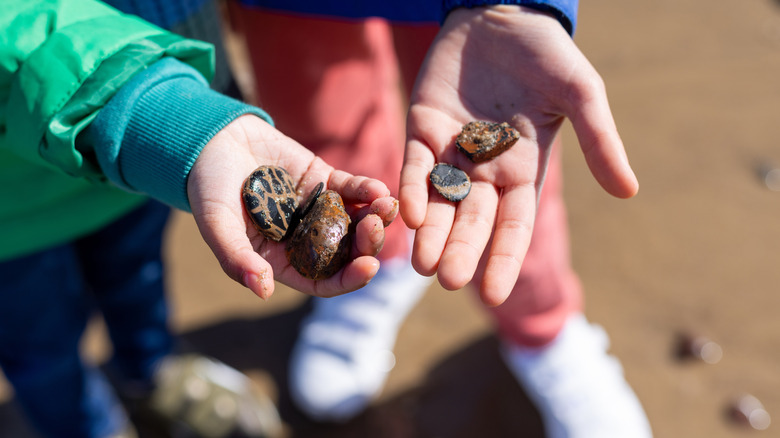Upcycle Rocks Into DIY Sticky Traps For Fungus Gnats
We may receive a commission on purchases made from links.
As tiny as fungus gnats are, there is nothing discreet about their presence. They fly in your face when you sit down for dinner, or they appear in your dog's water bowl. Even the bright yellow sticky traps scream for attention no matter how hard you try to hide them. If you're a plant owner and are wondering how to get rid of fungus gnats, consider yourself lucky that you haven't encountered them before. These tiny gnats feast on fungi and decaying plant matter found in potting soil, as well as plant roots. An adult gnat can lay as many as 200 eggs on the surface of the soil, turning a single houseplant into a gnat colony.
The enormity of this problem has resulted in a variety of suggested solutions, ranging from store-bought surface sprays and soil drench options to using household items like this common bathroom staple to rid houseplants of fungus gnats or cinnamon to keep fungus gnats at bay. One of the most popular solutions is bright yellow sticky traps, like these Stingmon Houseplant Traps, that nestle into the soil and catch fungus gnats. Although these pests are attracted to yellow, we don't need to draw more attention to the infestation taking over our home.
For a more subtle and budget-friendly option, turn upcycled rocks into DIY sticky traps for fungus gnats, which can also double as plant décor. All you need are rocks — small enough to fit into your pot but large enough to easily remove once they're covered with gnats — and a spray can of sticky coating designed for pest traps.
What to know when using rocks as gnat traps
To create DIY gnat traps, simply spray rocks with Tanglefoot Fly Tangle-Trap Sticky Coating or Bug Ball's Catch EM' Sticking Coating Aerosol and place them around houseplants. Even with routine watering, the spray remains sticky. These rocks are now double agents, posing as plant accessories while trapping gnats. The pests are nearly invisible on dark rocks, unlike the unappetizing dead insects that are glaringly obvious on yellow traps. Putting rocks around your plant also reduces the amount of surface space available for adult gnats to lay eggs. However, it's important to note that these traps are only effective on adult gnats. They won't kill eggs that have already been laid in the soil. To get rid of larvae, you'll need to try a microbial insecticide like Summit's Mosquito Bits.
Although the sticky coating is non-toxic and pesticide-free, use protective eyewear, a face mask, and gloves when spraying the rocks. Also, keep pets and children away to avoid accidental (and messy) contact. To make your plant less inviting to fungus gnats, avoid overwatering, since gnats love damp potting material. Use pots with drainage holes to avoid oversaturation, and if your plant tolerates it, let the dirt dry out between waterings. You can also cover the surface of the soil with a thin layer of pea gravel, lava rocks, or pumice.
